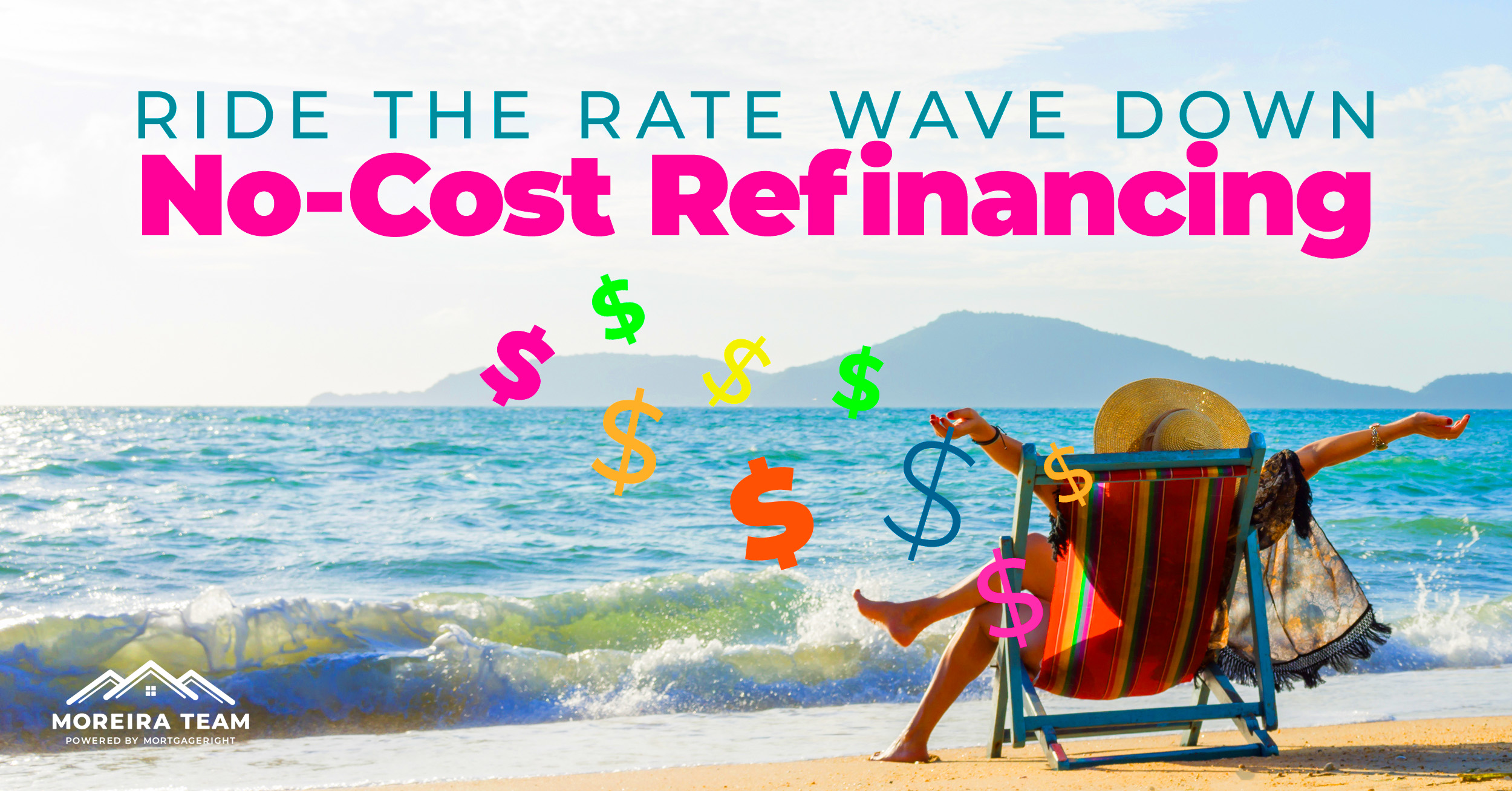
In this article
- Understanding the Lowering Rate Environment
- The Right Time to Buy: Seizing the Opportunity
- How to know if it’s the right time to buy:
- Why Is a Refinance Beneficial?
- Lower your interest rate.
- Change your loan length.
- Lower your principal.
- What’s the catch?
- When to Refinance Mortgage Loans: The Six-Month Timeline
- Moreira’s rolling no-cost refinance strategy
- Are you ready to ride the rate wave down?
Homebuyers and investors are constantly watching rates to determine the best time to enter the market. No one wants to buy a house today if it will cost less tomorrow. Refinancing is always an option, but the hassle and cost to refinance mortgage loans serve as a roadblock that keeps many homeowners from saving money on their mortgage or turning a profit on an investment.

Using a no-cost refinancing strategy can help eliminate the cost of refinancing, eliminate your worry over when to refinance mortgage loans, and ultimately give you more options to buy in an unsure market or leverage your equity as rates drop.
In this article, we’ll cover
- What a lowering rate environment is
- How to buy a home when rates are high
- When to refinance mortgage loans
- How a no-cost refinance works for you
- The rolling refinance strategy
Homeowners or anyone shopping for a new home can actually use high interest rates to their benefit if their lender can offer a simple refinance with no closing costs. It’s a great strategy for anyone in the following situations:
- You expect a mortgage interest rate drop.
- You expect increased future competition in the market.
- You have an opportunity while rates are high.
Understanding the Lowering Rate Environment
If you’ve ever wondered when to refinance mortgage loans for the biggest benefit during a lowering rate environment.
A lowering rate environment is as simple as it seems: A period in which mortgage rates are expected to decline over time.
There is so much market analysis and speculation that upcoming interest rate dips or spikes are telegraphed in advance. The Fed will broadcast its intention to lower rates in the future, but you can also watch market trends on your own. Lowering rate environments usually follow extended periods of rate increases and a time of rate stagnation.
For anyone who took out a new mortgage or refinanced while rates were fairly high, this is an opportunity to lower that rate without costing upfront money out of pocket.
After available rates dip below your current rate is typically when to refinance mortgage loans. A good mortgage lender can use the new interest rate to absorb your closing costs while reducing your monthly payment and the lifetime cost of the loan.
Check our refinance calculator periodically to see how your rate stacks up to potential savings.
The Right Time to Buy: Seizing the Opportunity
Understanding when to enter the housing market is daunting. Should I wait for more inventory? Will prices go up if I wait? And no matter how much you analyze, the perfect house or investment property never comes along at the perfect time.
If you wait for better rates, you may find more competition when rates improve. You are probably not the only one eyeing a perfect house.
So what do you do? Do you lock in a bad rate or wait for someone else to bid on the property?
There is another option. When you expect rates to drop in the near future, you can purchase the house now with the expectation that you’ll refinance in six or more months after rates go down. And there is nothing preventing you from refinancing again if rates continue to drop, but more on that later.
How to know if it’s the right time to buy:
- Do you plan on purchasing a house in the next year?
- Is there an opportunity now you’re worried about missing?
- Do you expect rates to drop?
- Do you expect competition to increase?
If you can answer yes to two or three of those questions, purchasing now and refinancing over the next year or two may save you money in the long run.
Why Is a Refinance Beneficial?
Refinancing your mortgage basically means trading your loan for a new one. Homeowners refinance for all kinds of reasons, like taking out equity (money they’ve already paid toward the principal), decreasing the lifetime loan cost, or decreasing their monthly payments.
Ultimately, it comes down to changing the interest rate, changing the loan terms, or changing the principal amount.
Lower your interest rate.
When your personal financial situation improves, or the Fed lowers interest rates, you can benefit by refinancing your loan to a lower percent interest rate. Lowering your interest rate can reduce monthly payments and lifetime loan costs.
Change your loan length.
A refinance may change the length of your loan. A homeowner with lots of equity in their home can refinance into a 30-year mortgage to stretch the remaining balance and significantly lower their monthly payments (though it will likely increase the lifetime cost of the loan).
A homeowner may also choose to shorten to a 15-year mortgage to cut lifetime costs but this will result in higher monthly payments.
Lower your principal.
Homeowners with a large sum of cash on hand may refinance and use the cash as a deposit on the new loan, which will result in much lower lifetime costs and more favorable loan terms.
What’s the catch?
The only real downside to refinancing your mortgage is the closing cost. Your lender and any other attorneys and processors involved in the new loan will incur expenses creating the new loan.
When to Refinance Mortgage Loans: The Six-Month Timeline
Many homeowners don’t realize they can refinance their home in as few as six months on their current loan. And they don’t need to know that since refinancing every six months isn’t beneficial for everyone. Considering closing costs, it could even get expensive.
However, when rates are expected to drop, the six-month window becomes a huge benefit.
Imagine this:
- You took out a mortgage with a 7-8%interest rate.
- Since then, you’ve put equity into the home, improved your credit score, or seen the average national rate drop to 6.5%.
- Refinancing your loan could decrease your monthly payment at a lower interest rate. Since there are significant savings, your lender can roll the closing costs into the new loan principal.
The closing costs are one-time expenses that pale in comparison to the overall cost of the loan, so a small percentage decrease could cover a no-closing-cost refinance and still save on the lifetime of the loan.
Moreira’s rolling no-cost refinance strategy
The rolling no-cost refinance strategy empowers buyers and investors to close on a property today without worrying they missed out on a better rate later.
The no-closing-cost refinance takes the six-month refinance window and puts it on repeat.
Once homeowners have made six payments on their mortgage, they usually qualify for a no-closing-cost refinance with the Moreira team.
If rates continue to drop after six months, we can do the same thing again. Even a half-percent rate drop can result in thousands of dollars in annual savings.
Are you ready to ride the rate wave down?
If you’re ready to purchase a home now or have a high interest rate you can’t afford to refinance, consider reaching out to the Moreira Team to see how we can help.
Our expert lenders keep their eyes on the market so our clients know when to refinance mortgage loans and always get the best rates. See how we can help you save as rates drop this year.

